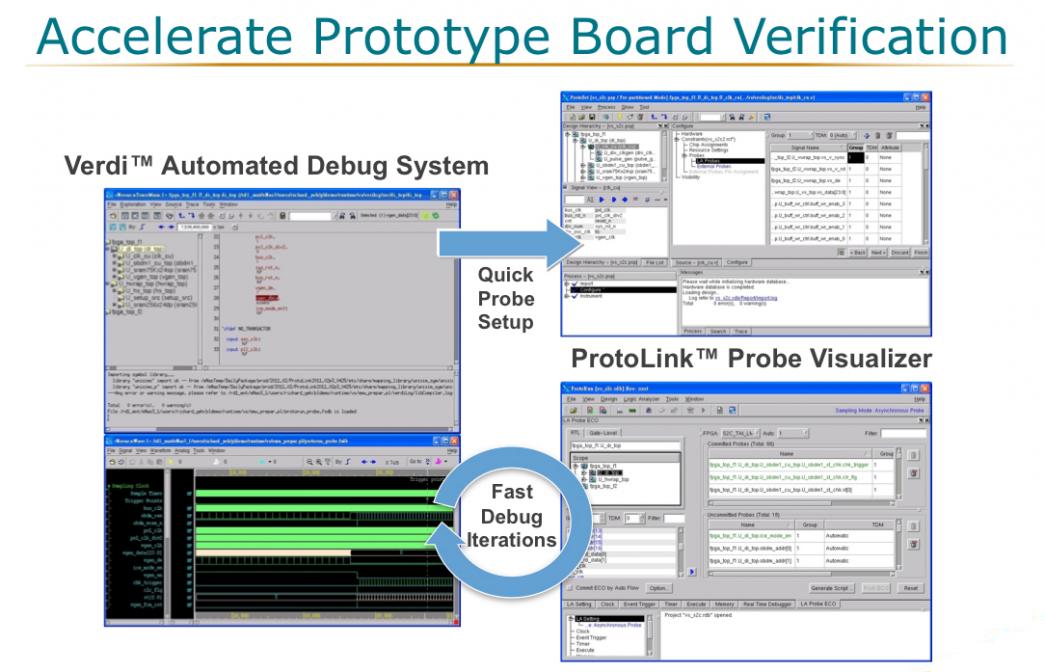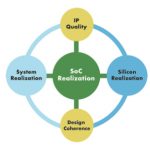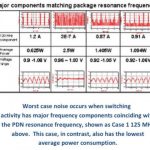You are currently viewing SemiWiki as a guest which gives you limited access to the site. To view blog comments and experience other SemiWiki features you must be a registered member. Registration is fast, simple, and absolutely free so please,
join our community today!
ESD has historically been a big problem analyzed with ad-hoc approaches. As explained earlier, this is no longer an adequate way to plan nor signoff ESD protection.
Pathfinder is the first full-chip comprehensive ESD planning and verification solution. It is targeted to address limitations in today’s methodologies.… Read More
FPGA-based prototype boards are a fast, cost-effective platform for SoC system validation but they are notoriously difficult to set up and to debug. There is a big upside, however, allowing early software integration and testing and thus finding bugs in both the software and the SoC earlier. This approach is much cheaper than … Read More
A High-Definition Multimedia Interface (HDMI) IP core was being implemented in an advanced process technology. This fairly large and complex analog mixed-signal (AMS) IP comprising over 130K devices was close to being finalized and shipped to the customer. But many design rules at the foundry were unexpectedly changed from… Read More
If you just casually peruse most marketing presentations by EDA companies, you’d come to the conclusion most SoCs are designed from scratch, wrestlilng the monster to the ground with bare hands. But the reality is that most SoCs consist of perhaps 90% IP blocks (many of them memories). That still leaves the remaining 10% … Read More
The problem:To move dual-port SRAM library and macros from a 40nm process to a 28nm process. In addition to all the changes between two different foundry processes, the 28nm rules are disruptive and incompatible with the previous rules. The memory corecells (foundry-specific) would also need to be completely replaced.
Current… Read More
As the complexity of the chip-package-system (CPS) interactions has increased, the tradeoffs in doing a power and noise analysis has had to gradually increase. As is so often the case in semiconductor designs, issues first arise as second-order effects that can largely be ignored but each process node makes the problem worse … Read More
Mentor 2 : Carl Icahn 0by Daniel Nenni on 05-01-2011 at 9:46 amCategories: EDA
The corporate raiders are still throwing rocks at Mentor Graphics. I have followed this reality show VERY closely and find their latest assault seriously counterproductive. Disinformation is common in EDA but I expected more from Carl Icahn and the Raiderettes. They are quite the drama queens. Here is a billion dollar question:… Read More
I was at Mentor’s u2u (user group) meeting and one of the keynotes was by Ivo Bolsens of Xilinx. The other was by Wally Rhines and is summarized here.
Ivo started off talking analogizing SoCs as the sports-cars of the industry (fast but expensive), and FPGAs as the station wagons (not cool). In fact he even said that when Xilinx… Read More
I was at Wally’s u2u (Mentor user group) keynote yesterday. The other keynote was by Ivo Bolsens of Xilinx and is here. He started off by looking at how the semiconductor industry has recovered and silicon area shipments are now back on trend after a pronounced drop in 2009 and revenue has followed. Finally the semiconductor… Read More
Power has become the strongest driver of semiconductor design today, more important than area, more important than timing. Whether the device is handheld, like a wireless phone, or tethered, like a router, complex power and energy requirements must be met. Shrinking geometries continue to impose new challenges as power management… Read More











